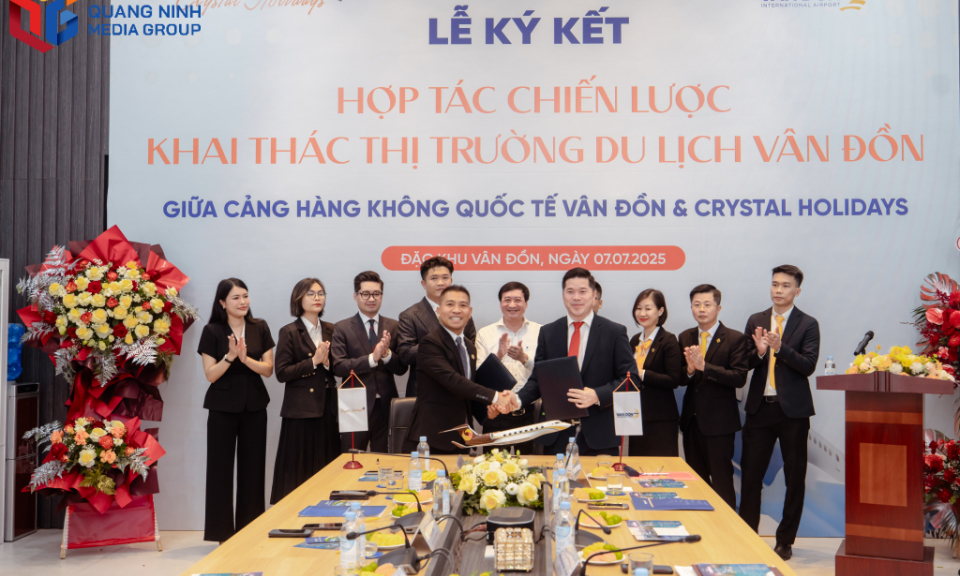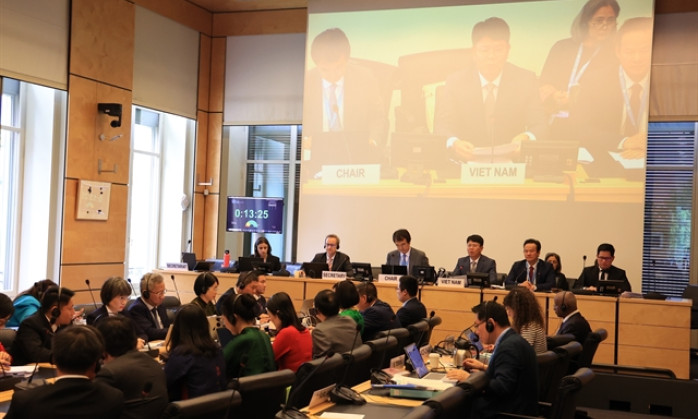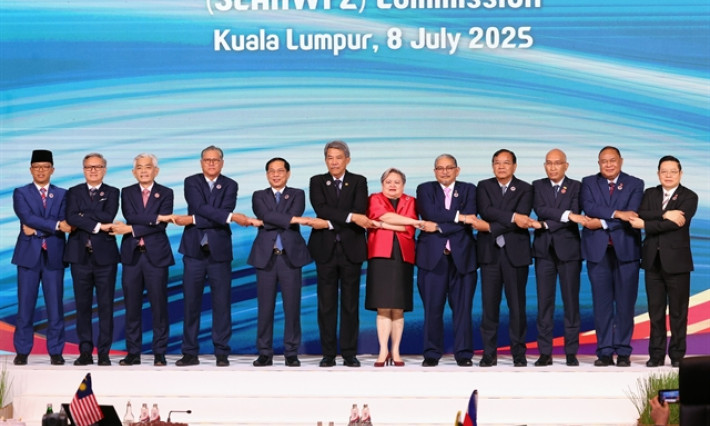Côn Đảo Islands to become eco-tourism paradise
Côn Đảo archipelago is set to become a world-class site for marine, cultural, historical and spiritual tourism, according to its plan for development.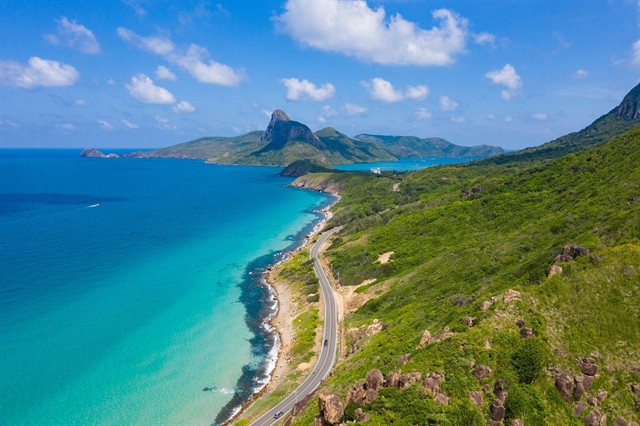
At Côn Đảo National Park in the southern province of Bà Rịa-Vũng Tàu from April to October, visitors can participate in exciting activities, such as witnessing sea turtles laying eggs and releasing baby turtles into the ocean at dawn.
As an important nesting place for two rare marine species -- olive ridley sea turtles and hawksbill sea turtles, the park has 14 beaches that the turtles favour to lay eggs, including those on Hòn Tài (Tài Islet), Hòn Bảy Cạnh (Bảy Cạnh Islet) and Hòn Tre (Tre Islet).
Among them, Bảy Cạnh Islet has attracted the largest number, with up to 30 mother turtles coming ashore to nest at night.
As tourists from Hà Nội joining a group releasing baby sea turtles into the sea in August, Nguyễn Ngọc Lan and her children were excited about the new experience.
"Côn Đảo is renowned for its rich and diverse fauna, flora and marine life. It is also the nesting haven of the highest number of sea turtles in Việt Nam. Wishing to enable my children to learn about nature while on vacation, I decided to take them to Côn Đảo National Park this summer," Lan said.
"The park authority has done an excellent job preserving the wild landscape and natural environment, which is extremely important. A fresh and clean environment will give us more energy to regenerate our health."
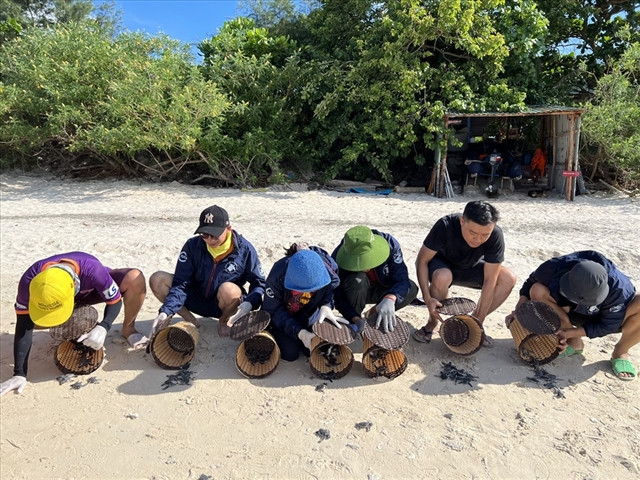
According to Nguyễn Hoàng Phước, a volunteer for the sea turtle preservation programme, Côn Đảo deserves its title as one of the most beautiful domestic tourist destinations.
"I have been to Côn Đảo four times and many other famous islands at home and abroad. However, to me, the archipelago still ranks at the top. The sea here is crystal clear and beautiful while the local people are fully aware of the preservation of the marine environment, which motivated me to become a volunteer in the sea turtle conservation programme," he said.
Phước added that visitors to Bảy Cạnh Islet or other big islands of the archipelago are likely to see signs calling for environmental protection that volunteers and locals have erected.
Developing eco-tourism
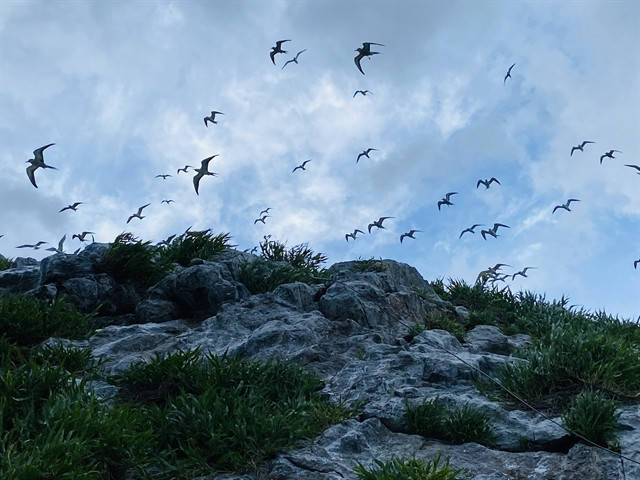
The 16-island archipelago of Côn Đảo is located 180km off Vũng Tàu City and about 230km southeast of HCM City.
Côn Đảo was once named "Hell on Earth" with painful memories of French colonialists and the US-aided-and-abetted Sài Gòn regime turning the archipelago into a prison to detain Vietnamese revolutionary fighters and other patriots.
Today, it is better known for beaches with white sand, crystal-blue water and colourful coral reefs, attracting an increasing number of local and foreign visitors in recent years.
The national park is home to 1,077 species of vascular plants and 155 species of fauna. Many bird species in Côn Đảo cannot be found anywhere else in Việt Nam, such as the red-billed tropicbird, masked booby, and pied imperial pigeon.
Surveys conducted by the Nha Trang Institute of Oceanography have found more than 1,300 maritime fauna and flora species, including 44 in Việt Nam's Red Data Book, in Côn Đảo National Park.
The archipelago is also home to a small population of dugongs and an important nesting place for olive ridley sea turtles and hawksbill sea turtles that are vulnerable to extinction worldwide.
With the success of sea turtle conservation activities in recent years, Côn Đảo has been recognised as an official member of the Indian Ocean-Southeast Asia, the 11th member of the marine turtle conservation network.
The national park, a Ramsar wetland of international importance, has more than 340 species of corals and is one of the richest and most diverse coral reefs in the country.
With such natural gifts, Côn Đảo Islands have the potential to develop eco-tourism products such as watching turtles lay eggs, diving to see corals, climbing mountains and trekking into the forest.
To properly reach its potential, the Bà Rịa Vũng Tàu People's Committee [the provincial administration] has approved a plan for the development of eco-tourism and leisure tourism in Côn Đảo National Park until 2030.
The plan stipulates that the principle of leasing the forest environment is not to change the state's ownership of the forest.
Organising eco-tourism must not negatively affect natural ecosystems, biodiversity, landscapes, environment, and natural life of wild animals and plants, as well as the cultural identity of the local community.
The archipelago is also set to become a world-class site for marine, cultural, historical and spiritual tourism, according to a revised plan for Côn Đảo development by 2045, newly approved by Deputy Prime Minister Lê Văn Thành.
The plan has been revised to boost tourism on the islands, protect and promote its historic relics and preserve the ecosystem of Côn Đảo National Park.
Under the plan, Côn Đảo's population will reach 15,000 by 2030 and 25,000 by 2045. The archipelago now comprises 16 islands with a total land area of over 75 square kilometres, and has a population of 10,500 who live only on Côn Sơn, the biggest island.
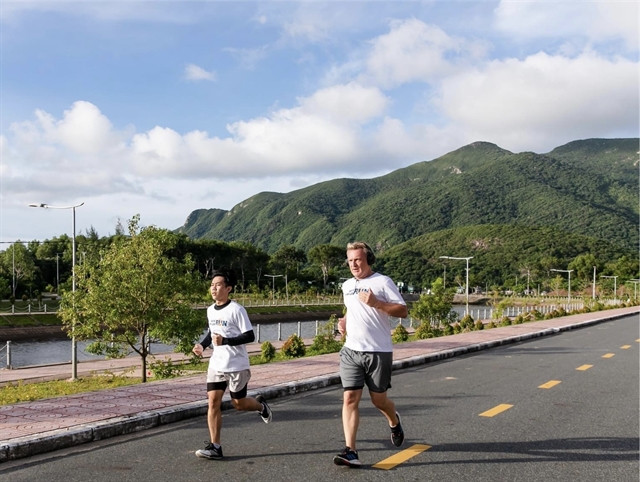
According to Nguyễn Công Vinh, vice chairman of the People's Committee of Bà Rịa Vũng Tàu Province, the revised plan is an important decision, playing an important role in planning and orienting the development of Côn Đảo in the future.
The provincial authority has been investing in various projects to innovate Côn Đảo's tourism, such as bringing electricity from the mainland to the islands, building a telecommunications cable system and waste treatment plant adopting incineration, and a reservoir to supply the needs of local people and tourists.
In addition, the national park is now offering 20 sites with over 900 hectares of land for lease, according to Nguyễn Khắc Pho, director of the Côn Đảo National Park authority.
Through the lease, the southern province aims to develop scores of eco-tourism products on the islands in keeping with national and international standards.
The park now has more than 60 eco-tourism projects that have been given in-principle approval and are looking for investors. They have an obligation to coordinate with the park to protect the forest, ensuring forest fire prevention and fighting during the project implementation.
One of the highlighted eco-tourism projects is being developed by the Saigon Pearl Investment Company.
Under the deal signed between the company and the park authority, more than 70 hectares of land will be leased to the company to build an eco-tourist site. It will include a genetic resource conservation centre for endangered plants, corals, and turtles and a brown squirrel protection programme.
Trần Việt Khoa, chairman of the Management Council of Saigon Pearl Investment, said the company would not trade off the national park's environmental values and untouched beauty for economic benefits, adding that to protect the forest and marine ecosystems and wetlands is to protect tourism resources and sustain the business.
Tourism products would be created based on the natural ecosystem around Ông Câu Beach, while the pristine natural ecosystem here would be preserved as part of efforts to develop Côn Đảo as a national tourist site, Khoa said.
The local authorities have also made great efforts to protect the ecosystem and the natural landscape of the park.
The Côn Đảo island district authority has coordinated with the World Wide Fund for Nature Vietnam to work on a project to reduce the use of plastic bags and single-use plastic products.
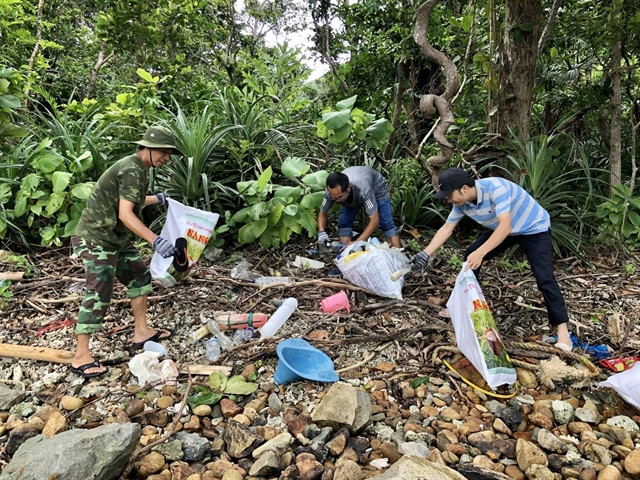
The district has officially committed to becoming a plastic-reducing island, aiming to have no plastic waste in nature by 2030.
With the successful launches of eco-tourism projects and environmental protection measures, Côn Đảo is expected to be a role model for Việt Nam's tourism industry and a not-to-be-missed destination for travellers worldwide.

